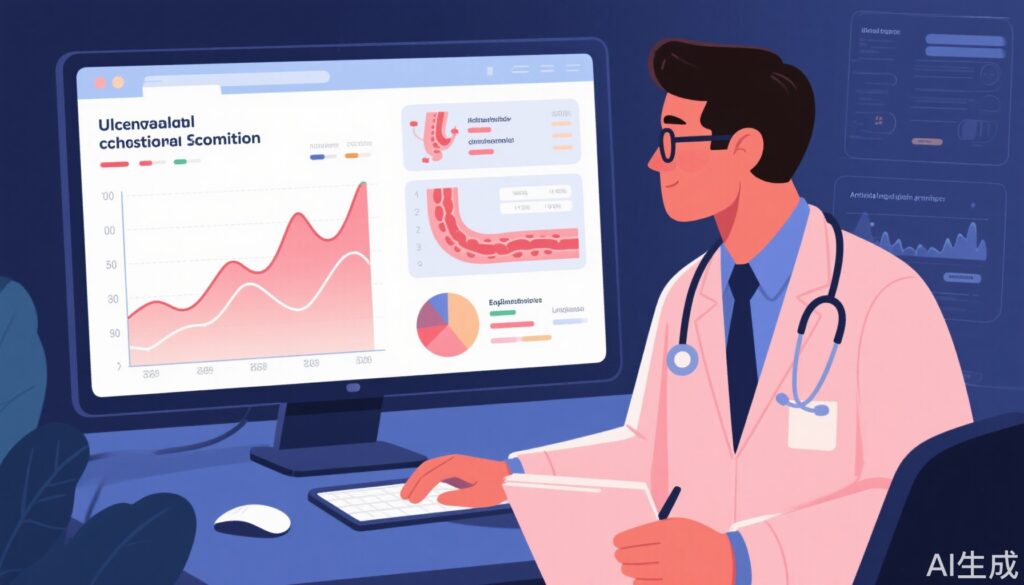Introduction
Ulcerative colitis (UC) is a chronic inflammatory bowel disease characterized by inflammation of the colon lining. Its clinical course varies widely, and remission often depends on corticosteroid (CS) therapy. However, some patients develop refractory UC, where inflammation persists despite treatment, necessitating tailored therapeutic strategies. Understanding the prognostic factors that predict treatment response is crucial for optimizing patient outcomes.
Objective
This study aimed to develop an explainable machine learning model to predict long-term remission in refractory UC patients, using data from a comprehensive Japanese nationwide registry collected before the widespread use of biologic agents.
Methods
The study analyzed 4,003 UC patients from a registry containing 79,096 newly registered cases between April 2003 and March 2012. Patients included had a Mayo score ≥3 at registration and were using corticosteroids since entry. The dataset included 3 years of follow-up data. A pointwise linear (PWL) model—a machine learning approach designed to provide interpretable predictions—was developed to forecast remission lasting over 3 years.
Results
The PWL model demonstrated good predictive performance, with an area under the curve (AUC) of 0.774, precision rate of 0.55, recall rate of 0.70, and F1 score of 0.62 on a test dataset spanning from registration to two years later. Notably, the presence of pseudopolyps at registration showed a significant negative correlation with remission, underscoring their role as an important prognostic factor.
Discussion
This study highlights the potential of explainable artificial intelligence in predicting disease progression and treatment outcomes in UC. Pseudopolyps, often indicative of chronic inflammation and mucosal damage, can serve as a clinical marker for refractory disease. The model’s interpretability allows clinicians to understand which factors contribute most to the prognosis, facilitating personalized treatment planning.
Clinical Implications
By accurately predicting long-term remission, the model can guide clinicians in identifying patients at risk for refractory UC early, allowing for timely intervention with alternative therapies such as immunomodulators or biologics. This is particularly valuable in settings where biologic usage was previously limited, as in the Japanese cohort studied.
Limitations and Future Directions
While the model was trained on extensive registry data, it reflects treatment patterns before biologic agents became widespread in Japan. Future studies should validate and refine this model using more recent data incorporating novel therapies. Additionally, integrating genetic, microbiome, and lifestyle data may further enhance predictive accuracy.
Conclusion
This study successfully developed a highly accurate and interpretable machine learning model for predicting long-term remission in refractory UC patients. The findings demonstrate the utility of artificial intelligence in identifying critical prognostic factors, such as pseudopolyps, thus supporting personalized management strategies to improve patient outcomes.
References
Sano M, Kanatani Y, Ueda T, Nemoto S, Miyake Y, Tomita N, Suzuki H. Explainable artificial intelligence for prediction of refractory ulcerative colitis: analysis of a Japanese Nationwide Registry. Ann Med. 2025 Dec;57(1):2499960. doi: 10.1080/07853890.2025.2499960.



